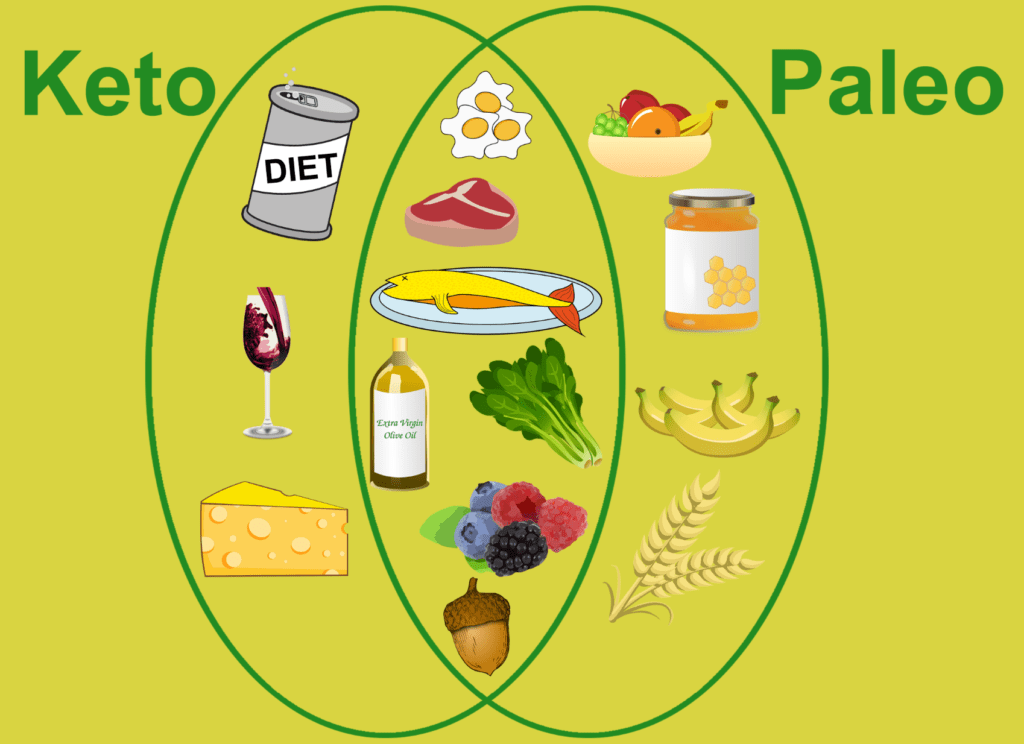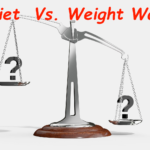The Keto Diet and Paleo Diet, often get confused for one another and people often end up wondering which of these two is more beneficial. Let’s explore the differences between these two popular diets and find out which one is right for you! Keto or Paleo diet which is right for you?
| ** This article contains affiliate links. If you use these links to buy something we may earn a commission at no extra cost to you. We only recommend products and services we can stand behind. Thank you very much for your support. ** |
What is the Keto diet?
The Ketogenic diet has been around since the 1920s but has gained popularity in recent years due to its amazing benefits. The Ketogenic diet relies on a high-fat/low-carbohydrate meal plan that forces your body into ketosis, causing it to burn fat instead of glucose as fuel. This results in weight loss, mental clarity, improved cholesterol levels, reduced inflammation, lower blood sugar levels – just to name a few of its many benefits!
The keto diet is a high-fat, medium protein, ultra-low-carb diet. It’s designed around managing macronutrients. Keto works this way. Instead of using sugar to fuel your body, you’ll use ketones.
The process of using ketones is called ketosis. Your body naturally goes into ketosis when it’s deprived of sugar and uses fat for its fuel instead of sugar.
But you can’t simply stock up on fatty foods and snacks filled with trans fats and processed oils. The keto diet focuses on healthy fats like avocado, dairy, olive oil, and various seeds. The avocado is the ketoer’s (keto dieter’s) best carbohydrate friend. Salmon, organic eggs, and meat produced from grass-fed animals are the most popular source of protein for the keto dieter (ketoer).
The ketoer has to be conscientious about what they’re consuming. But once they’re dialed in they’ll have the superpower of never being feeling hungry again! Because following the keto diet diminishes food cravings substantially. The macronutrient ratios are around 75% fat, 20% protein, and 5% carbohydrates, more or less.
Related reading: “How To Make A Keto Meal Plan”
What is the Paleo diet?
The Paleo diet emphasizes consuming only foods that were available during the Paleolithic era, which highly restricts highly processed foods and dietary additives. This diet consists of large amounts of vegetables, fruits, nuts/seeds/spices, meat/fish/eggs, healthy fats while greatly reducing carbohydrate intake. The Paleo diet is a well-balanced low-carbohydrate meal plan that can help lower blood pressure, improve cholesterol levels, manage diabetes and promote weight loss.
Think of Paleo as back-to-basics dieting simulating what our very active hunter-gather predecessors ate without the processing and added sugar of western modern foods.
The premise is we are more suited to the consumption of grass-fed animal products, vegetables, fruits, and nuts than we are at processing grains, dairy, and refined sugars. Paleo proponents think this can lower inflammation, improve digestion, and promote overall wellness. In addition to the diet, exercise is encouraged because our paleolithic ancestors were extremely active compared to our modern lives. The paleo lifestyle also encourages activities that relieve stress like yoga or meditation.
The main differences between paleo and keto
 Both diets promote eating healthy unprocessed foods without adding sugar. Even though there’s some overlap, they aren’t exactly the same thing. Let’s look at some of their differences.
Both diets promote eating healthy unprocessed foods without adding sugar. Even though there’s some overlap, they aren’t exactly the same thing. Let’s look at some of their differences.
Lifestyle and goals
Keto is a very meticulous diet focusing on balancing the macronutrients. Some people follow keto for a specific goal, while others make it a permanent lifestyle. Whereas paleo focuses on foods our earlier ancestors ate for optimizing wellness.
Carbohydrates
To achieve and maintain ketosis, the keto diet calls for minimum carbs. Paleo isn’t exactly a low-carb diet. Because fruit, paleo sweeteners like honey and agave syrup, and some vegetables are high in sugars. On the other hand, both diets avoid refined foods like bread, pastries, soda, cereals, etc. Therefore, paleo is a fairly low-carb diet compared to the Standard American Diet (SAD).
Fats and proteins
The majority of the calories are from the consumption of fats on the keto diet. Conversely, proteins are typically the main caloric source on the paleo diet, but that’s not a rule. The paleo diet isn’t as strict as the keto diet about where your calories come from, you could load up on fruit and vegetables (carbs) and still be paleo compliant. Dairy products are restricted with paleo, whereas they’re a source of fat with keto.
Weight loss with keto and paleo
Both diets are popular for their promise of weight loss. Especially if you are coming off the SAD diet with all of its heavily processed foods. The keto diet will help you lower your weight quickly, especially so if you are diligent with tracking your macros and calories. If you aren’t able to, or just don’t want to stay in ketosis long-term you’ll have to modify your diet to maintain your weight loss outside of being in ketosis.
A lot of people find paleo easier to adhere to for the long haul. Because of its ease to follow paleo might be for you.
Like so many things in life, your diet doesn’t have to be an all-or-nothing affair. If your goal is weight loss keto can get you to your target the most quickly. Then you can transition to paleo to maintain your target weight.
There’s also the “Dirty Keto” and the “Lazy Keto” options which aren’t discussed here, but you can read about it in this other article.
Related reading: “Comparing Dirty Keto And Clean Keto”
Related reading: “A Review Of The “Lazy Keto Diet””
So which diet is right for you?
The Ketogenic diet has proven to be more effective than the Paleo diet when it comes to losing weight and managing health problems like diabetes and obesity. When considering whether to follow a Keto or Paleo diet, focus on your personal health condition and goals. If you want to follow a diet that encourages weight loss without taxing your body, go with the Ketogenic diet! However, if you would rather focus on consuming nutrient-dense whole foods and avoiding highly processed additives while still reaping great health benefits, consider following the Paleo lifestyle.
Are you ready to start your Keto Diet? One way to get started with a Keto Diet is to have an 8-week “Custom Keto Diet Plan” created for you based on your height, weight, age, level of physical activity, and personal weight goals. Click the banner to learn more about your customized keto diet plan, or click here to go straight to your custom keto diet meal planner. |
 |
|
|









